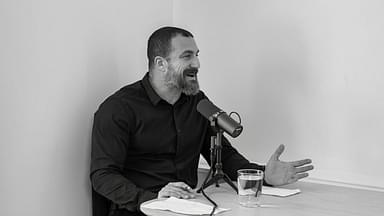Hurt and harm can both mean causing physical injury or damage. However, when compared, harm has a more serious and longer impact than hurt. It implies serious or long-lasting damage to an individual. In a recent Huberman Lab podcast, Dr. Andrew Huberman and Dr. Sean Mackey converse on the topic of ‘Tools to Reduce & Manage Pain.’ Mackey is Chief of the Division of Pain Medicine and Professor of Anesthesiology. He focuses on using advanced neurosciences, patient outcomes, biomarkers, and informatics to treat pain.
While discussing various aspects of pain on the podcast, Dr. Sean Mackey speaks on the difference between hurt and harm along with Huberman. Dr. Andrew Huberman initiates the conversation by asking Mackey how one determines the difference between hurt and harm, and Mackey shares some valuable inputs from his experiences. Mackey states that the biggest key and tip for pain management is to understand the distinction between hurt and harm, which is extremely critical.
Furthermore, he shares an example with the neuroscientist of a patient he was working with closely. Mackey was treating a patient who considered tennis his life. One day, he comes hobbling in on his crutches and has pain in his foot. The doctor suggested the patient not put pressure on his foot because of the injury. After examining the patient, it was found that he was suffering from an injury called Morton’s neuroma. Morton’s neuroma is a fibrous thickening of tissue around the nerves that go to your toes, and it bundles the tissue nerves. This injury causes pain but does not cause harm.
Once the patient realized there would be no harm if he continued to play, he started to play again. The pain, however, was there, but it reduced with time. So, the main thing remains that though an activity may hurt, it does not necessarily mean that bodily harm will occur.
“I don’t want people to think that that kind of thing occurs all the time; it doesn’t. Chronic pain conditions are often incredibly complicated and need much more than you know with a 45-minute or 60-minute education session.”
During the podcast, he further mentions that we first have to learn whether the pain we’re experiencing represents something. Is this pain or injury causing us harm, or do we need to seek medical attention? Helping and educating people to understand the distinction is critical. You don’t want to ignore something that is a real medical issue that’s getting worse and needs medical attention. This is where the complexity of pain comes in.
“One of the definitions for chronic pain is that the pain persists beyond the time of tissue healing. So in many of our sessions, we’re educating people on the difference between hurt versus harm.”
Therefore, the distinction between hurt and harm is important for people to be educated about. In addition to this, Huberman also asks Mackey to explain the psychological aspect of hurt vs. harm and how to deal with emotional pain.
Sean Mackey explains on Andrew Huberman’s show how he deals with patients who have emotional pain
In the episode, Dr. Huberman and Dr. Mackey discuss pain at the level of the body. They also look at the different ways to control pain. In the discussion, Huberman mentioned that there has been a substantial shift in the way society elucidates emotional pain. Emotional pain is valid like any other pain, but it can be difficult to point to a specific threshold.
During their discussion, Huberman asks Dr.Mackey about how he gauges his patient’s psychological pain. Dr. Mackey pointed out that pain is a sensory and emotional experience. He added that catastrophizing is an integral factor that amplifies the pain and leads to poor treatment responses.
In addition, Mackey also states that while taking care of a patient, he uses quite a lot of data on the patient’s experience across physical, psychological, and social functioning. All of this is done with the help of a digital health system. This not only helps to recommend therapies but also to gauge their other depressive symptoms. He shared that the FDA has approved and prescribed only a limited number of medicines for pain.
“More often than not, we borrow from the psychiatrists some of their anti-depressants, which will frequently work very effectively for pain and work on those pain-related circuits in the brain.”
He concluded that he doesn’t completely distinguish between psychological and physical pain and would prefer to treat the patient’s pain holistically.





